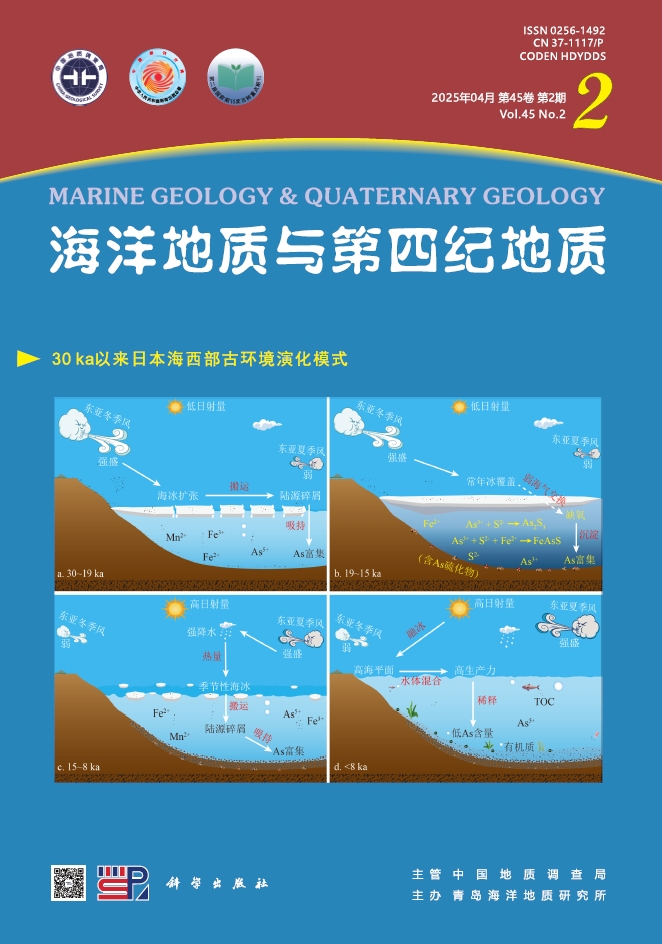| [1] |
Widdel F. Microbiology and ecology of sulfate-and sulfur-reducing bacteria[C]//Biology of Anaerobic Microorganisms. 1988:469-585.
Google Scholar
|
| [2] |
Barnes R O,Goldberg E D. Methane production and consumption in anaerobic marine sediments[J]. Geology, 1976,4:297-300.
Google Scholar
|
| [3] |
Reeburgh W S. Methane consumption in Cariaco Trench waters and sediments[J]. Earth and Planetary Science Letters, 1976,28:337-344.
Google Scholar
|
| [4] |
Martens C S, Berner R A. Interstitial water chemistry of Long Island Sound sediments, I, dissolved gases[J]. Limnology and Oceanography, 1977,22:10-25.
Google Scholar
|
| [5] |
Reeburgh W S. A major sink and flux control for methane in marine sediments:anaerobic consumption[C]//The Dynamic Environment of the Ocean Floor. Lexington Books. D.C. Heath, Lexington, 1982:203-217.
Google Scholar
|
| [6] |
Borowski W S, Paull C K, Ussler Ⅲ W. Marine pore-water sulfate profiles indicate in situ methane flux from underlying gas hydrate[J]. Geology, 1996, 24(7):655-658.
Google Scholar
|
| [7] |
Borowski W S, Paull C K, Ussler Ⅲ W. Global and local variations of interstitial sulfate gradients in deep-water, continental margin sediments:Sensitivity to underlying methane and gas hydrates[J]. Marine Geology, 1999,159:131-154.
Google Scholar
|
| [8] |
Rodriguez N M, Paull C K, Borowski W S. Zonation of authigenic carbonates within gas hydrate-bearing sedimentary sections on the Blake Ridge:Offshore southeastern North America[C]//Proceedings of the Ocean Drilling Program, Scientific Results. 2000,164:301-312.
Google Scholar
|
| [9] |
Hinrichs K U, Boetius A. The anaerobic oxidation of methane:New insights in microbial ecology and biogeochemistry[M]//Ocean Margin Systems. Springer-Verlag, Berlin, 2002:457-477.
Google Scholar
|
| [10] |
Devol A H, Anderson J J, Kuivila K M, et al. A model for coupled sulfate reduction and methane oxidation in the sediments of Saanich Inlet[J]. Geochimica et Cosmochimica Acta, 1984, 48:993-1004.
Google Scholar
|
| [11] |
Iversen N, J rgensen B B. Anaerobic methane oxidation rates at the sulfate-methane transition in marine sediments from the Kattegat and Skagerrack (Denmark)[J]. Limnology and Oceanography, 1985, 30:944-955.
Google Scholar
|
| [12] |
Guo T M, Wu B H, Zhu Y H, et al. A review on the gas hydrate research in China[J]. Journal of Petroleum Science and Engineering, 2004, 41:11-20.
Google Scholar
|
| [13] |
McDonnell S L, Max M D, Cherkis M Z, et al. Tectono-sedimentary controls on the likelihood of gas hydrate occurrence near Taiwan[J]. Marine and Petroleum Geology, 2000, 17:929-936.
Google Scholar
|
| [14] |
祝有海,张光学,卢振权,等. 南海天然气水合物成矿条件与找矿前景[J]. 石油学报,2001,22(5):6-10.
Google Scholar
[ZHU Youhai, ZHANG Guangxue, LU Zhenquan,et al. Gas hydrate in the South China Sea:background and indicators[J]. Acta Petrolei Sinica, 2001,22(5):6-10.]
Google Scholar
|
| [15] |
吴必豪,张光学,祝有海,等. 中国近海天然气水合物的研究进展[J]. 地学前缘,2003, 10(1):177-189.
Google Scholar
[WU Bihao, ZHANG Guangxue, ZHU Youhai, et al. Progress of gas hydrate investigation in china offshore[J]. Earth Science Frontiers,2003,10(1):177-189.]
Google Scholar
|
| [16] |
Chen D F, Huang Y Y, Yuan X L, et al. Seep carbonates and preserved methane oxidizing archaea and sulfate reducing bacteria fossils suggest recent gas venting on the seafloor in the Northeastern South China Sea[J]. Marine and Petroleum Geology, 2005,22:613-621.
Google Scholar
|
| [17] |
陆红锋, 刘坚, 陈芳, 等. 南海台西南区碳酸盐岩矿物学和稳定同位素组成特征——天然气水合物存在的主要证据之一[J]. 地学前缘, 2005,12(3):268-276.
Google Scholar
[LU Hongfeng, LIU Jian, CHEN Fang, et al. Mineralogy and stable isotopic composition of authigenic carbonates in bottom sediments in the off shore area of southwest Taiwan, South China Sea:Evidence for gas hydrates occurrence[J]. Earth Science Frontiers,2005, 12(3):268-276.]
Google Scholar
|
| [18] |
栾锡武. 天然气水合物的上界面——硫酸盐还原-甲烷厌氧氧化界面[J].海洋地质与第四纪地质,2009,29(2):91-102.
Google Scholar
[LUAN Xiwu. Sulfate-methane interface:the upper boundary of gas hydrate zone[J]. Marine Geology and Quaternary Geology,2009,29(2):91-102.]
Google Scholar
|






 DownLoad:
DownLoad: